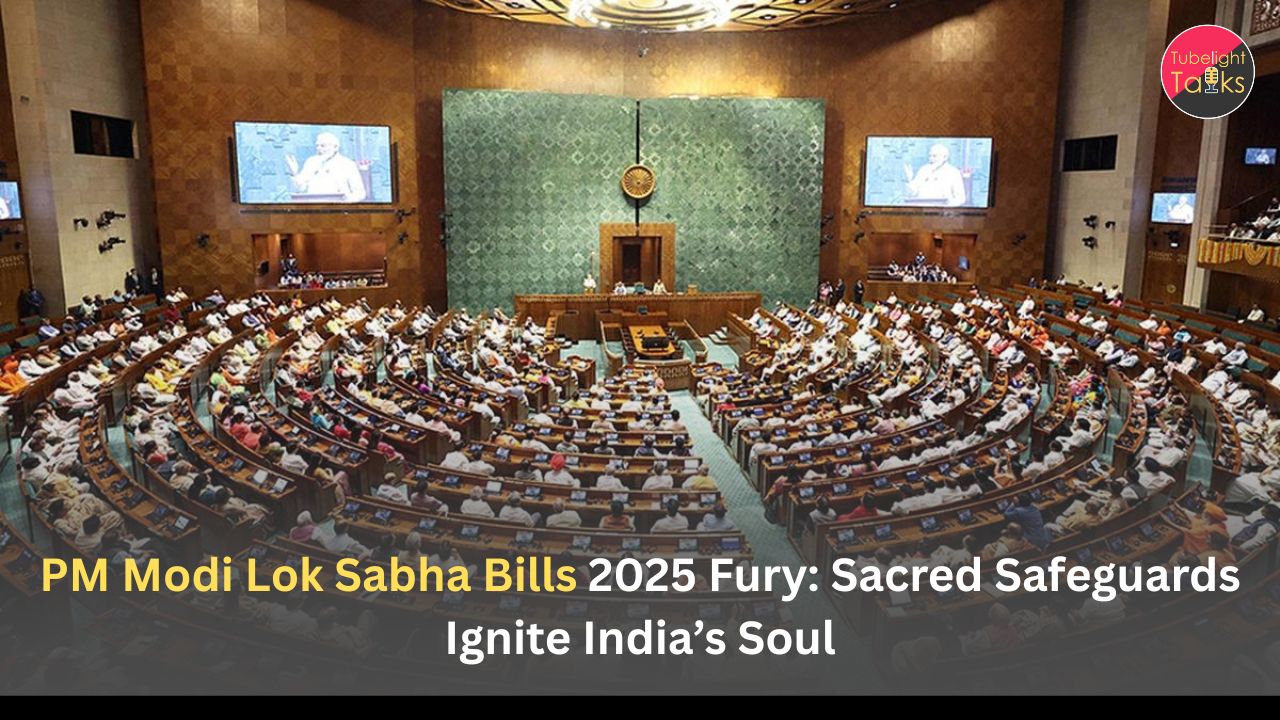SIR Phase II: The Election Commission of India (ECI) has reported a key milestone in Phase II of the Special Intensive Revision (SIR) of electoral rolls: more than 95.44% elector-specific Enumeration Forms (EFs) have been distributed to voters across 12 States and Union Territories.
According to the latest bulletin, the exercise covers around 50.09 crore electors, of whom about 48.67 crore have already received their forms during the ongoing door-to-door enumeration drive that runs from 4 November to 4 December 2025.
The SIR campaign aims to clean, update and deepen the inclusiveness of India’s electoral rolls ahead of forthcoming elections, ensuring that eligible voters are correctly registered and errors are minimised.
What is SIR Phase II and who is covered?
The Special Intensive Revision is an extra-deep verification drive ordered by the ECI under its constitutional and statutory powers to improve the accuracy of electoral rolls. After completing a similar exercise in Bihar, Phase II has been launched in:
- 9 States: Chhattisgarh, Goa, Gujarat, Kerala, Madhya Pradesh, Rajasthan, Tamil Nadu, Uttar Pradesh and West Bengal
- 3 UTs: Andaman & Nicobar Islands, Lakshadweep and Puducherry
In total, SIR Phase II covers nearly 51 crore electors across 321 districts and 1,843 Assembly constituencies. Every registered elector as on 27 October 2025 is to receive a unique, partially pre-filled Enumeration Form (EF) at their residence.
Key numbers: Over 95% forms already in voters’ hands
According to the latest update cited by news agencies:
- Total electors covered in Phase II: ~50.09 crore
- Enumeration Forms distributed: ~48.67 crore
- Overall distribution rate: 95.44%
The ECI has also confirmed that all 12 States/UTs have completed 100% printing of enumeration forms, which officials describe as a sign of “robust preparedness and logistical efficiency.”
On the ground, the campaign is being run by:
- Over 5.3 lakh Booth Level Officers (BLOs)
- More than 10.41 lakh Booth Level Agents (BLAs) nominated by recognised political parties
- Around 10,448 EROs/AEROs and 321 District Election Officers (DEOs)
The Commission has urged political parties to appoint more BLAs in some areas to further strengthen scrutiny and transparency during door-to-door verification.
State-wise highlights: Who is ahead, who is catching up?
Data from the ECI’s daily bulletins and subsequent media reports show strong but varied progress across States and UTs:
- Uttar Pradesh – India’s largest state by electorate (over 15.44 crore voters) has distributed about 94%+ of forms, with more than 14.5 crore EFs already handed over.
- Madhya Pradesh & Gujarat – Both states have reported very high distribution (above 98% in some bulletins), reflecting aggressive field efforts.
- Rajasthan – After printing nearly its full requirement, the state has achieved distribution levels well above 95%, crossing 5.3 crore forms.
- Tamil Nadu & Kerala – Southern states show mixed progress; Tamil Nadu has crossed the low 90s in percentage terms, while Kerala is still comparatively lower in distribution despite full printing.
- Smaller UTs – Lakshadweep and Goa are among top performers, with near-100% distribution, while Puducherry is in the mid-90s.
Some districts and major cities have slightly lower coverage due to the difficulty of contacting voters living in gated communities, apartments, or those who are frequently away, prompting BLOs and district officials to step up outreach efforts, including cooperation with RWAs and local bodies.
How the enumeration works: Door-to-door and digital
Under SIR Phase II, the enumeration period runs from 4 November to 4 December 2025. During this window:
- BLOs visit each household at least three times to deliver and collect Enumeration Forms.
- Each EF is partially pre-filled with existing data from the electoral roll; electors are asked to:
- Check spelling and details
- Add missing family members who are eligible
- Report deaths, shifts of residence, or any errors
- Check spelling and details
In addition to door-to-door work:
- Voters can check their details online on the ECI’s voter portal and related apps.
- Helplines like 1950 (with STD code) and a “Book-a-call with BLO” facility on ECINet are available for guidance.
The ECI has emphasised that the goal is not just high distribution percentages, but accurate and verified data when forms are returned, digitised and used to update the final rolls.
Why this matters: Cleaner rolls, stronger elections
SIR Phase II is a backend reform that directly affects front-end democracy:
- Reduces errors & duplication – Proper enumeration helps eliminate duplicate entries, wrong addresses and outdated details in the electoral roll.
- Improves inclusion – House visits and targeted outreach enable inclusion of migrants, women, first-time voters and marginalised groups often missed in routine updates.
- Supports smooth polling – Accurate rolls reduce disputes at polling booths, long queues due to verification delays and last-minute confusion about voter eligibility.
Given upcoming State and national-level elections, achieving over 95% EF distribution within two weeks of launch is being highlighted by the Commission as a sign of strong field mobilisation.
What should voters do now?
If you live in Chhattisgarh, Goa, Gujarat, Kerala, Madhya Pradesh, Rajasthan, Tamil Nadu, Uttar Pradesh, West Bengal, Andaman & Nicobar, Lakshadweep or Puducherry, and you receive an SIR Enumeration Form:
- Read every field carefully – Check your name, age, address, relation details and identity data.
- Correct mistakes clearly – Use clean handwriting and follow instructions given by the BLO.
- Add or delete entries where needed –
- Add eligible family members (e.g., those who have turned 18 as per qualifying date).
- Report deceased or shifted voters so rolls reflect reality.
- Add eligible family members (e.g., those who have turned 18 as per qualifying date).
- Attach documents where required – For new claims or corrections, attach proof of age and address as per ECI guidelines.
- Return the form on time – Hand it back to the BLO or use the suggested drop-off / online channels before 4 December 2025.
If you have not yet received a form but live in these SIR Phase II areas:
- Contact your BLO, call the 1950 helpline, or check voters.eci.gov.in to verify your status.
Voter verification as a moral duty
From a Satgyan (true-knowledge) lens, as emphasized by spiritual teachers Sant Rampal Ji Maharaj, participation in fair and honest elections is more than a bureaucratic formality—it is a Dharmic responsibility.
Key ethical points linked to this SIR exercise:
- Truth in public records
Ensuring that your name, address and eligibility are correctly recorded is a small but vital act of truthfulness. An accurate electoral roll is a collective reflection of society’s honesty. - Justice for every eligible voter
When rolls are clean, no genuine voter is left out and fraudulent entries are minimised. This strengthens the justice of the electoral process, so that the mandate reflects the real will of the people, not errors or manipulation. - Selfless service through awareness
Helping elderly family members, neighbours or less literate citizens to understand and fill the form is also a form of seva. It supports a more inclusive democracy where every voice has a chance to be counted.
In this view, filling the SIR form carefully and returning it on time is not just an administrative task—it is a small but meaningful step towards righteous governance.
Read Also: AI‑Generated Political Content: Election Commission of India Issues Label‑Mandate for Campaigns
FAQs: SIR Phase II
1. What is the Special Intensive Revision (SIR) of electoral rolls?
SIR is a deep verification drive ordered by the Election Commission to thoroughly check and update electoral rolls beyond routine summary revisions. In Phase II, it involves door-to-door distribution and collection of Enumeration Forms to verify each elector’s details in 9 States and 3 UTs.
2. Which States and UTs are covered in SIR Phase II?
Phase II covers Chhattisgarh, Goa, Gujarat, Kerala, Madhya Pradesh, Rajasthan, Tamil Nadu, Uttar Pradesh, West Bengal, and the UTs of Andaman & Nicobar Islands, Lakshadweep and Puducherry, spanning about 51 crore electors.
3. What does “over 95% forms distributed” actually mean?
It means that out of about 50.09 crore electors covered in Phase II, around 48.67 crore have already received their individual enumeration forms—equivalent to 95.44% coverage—as per the latest ECI bulletin cited in media reports. c
4. Is form distribution the same as updating the voter list?
No. Distribution is the first step. Voters must fill, correct and return their forms. These forms are then verified, digitised and processed to update the electoral rolls. Clean, timely returns are crucial for high-quality final rolls.
5. How can I get help if I am confused about my SIR form?
You can:
Contact your Booth Level Officer (BLO).
Use the “Book-a-call with BLO” feature on ECINet (where available).
Call the toll-free helpline 1950 with your STD code.
Check your details on voters.eci.gov.in for guidance on corrections or new registrations.










